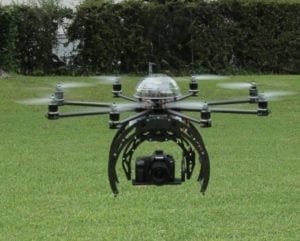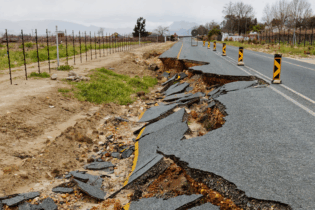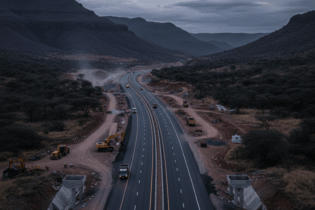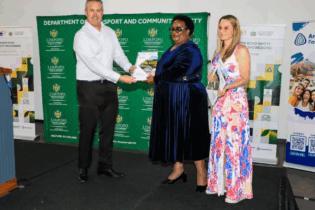Submitted by John Gore, pilot and tech at Drone Crew
On 17 May 2015, new regulations for operating RPAS (drones) in South Africa were announced. These new regulations take effect from 1 July 2015. There has been some confusion about the regulations, giving rise to myths that are now going viral. This article addresses some of the common myths going around about the new drone regulations for South Africa. Here each myth is exposed by the facts. Myth: All drone operators must have a pilot’s licenceThe drone operator does not need a pilot’s licence if he is operating for private or hobby use. The RPL ( Remote Pilots Licence) is only required for commercial, corporate and non-profit use. The RPL is 10x less complex and time consuming as a full sized PPL licence. Myth: The RPL Drone Pilot Licence will cost R150 000 – similar to a full-sized PPL
This crazy figure was invented, and later published in the media, as some started to believe the nonsense. The true cost of the RPL licence is nowhere close to that of a full-size PPL. How much will it cost then? Indications are a few hundred rands for the online theory exam (only 1 exam for RPL), and a few hundred Rands for the practical skills test, plus a few hundred Rands for final application (with proof of completion) for the actual RPL licence. Myth: A medical class 4 is required to fly a drone
The new drone regulations allow for medical self-assessment and do not require a medical certificate for drones smaller than 20kg (larger than 20kg is not yet possible). If you need to fly B-VLOS (beyond visual line of sight) or if you fail the medical self-assessment, then only do you need to do a full medical class 4. But for the majority of drone pilots: simply complete the self-assessment. Myth: The requirement for English language proficiency is racist and stupid
English is the standard language required in aviation worldwide. The test is done to ensure you are able to communicate in English. Myth: No flying closer than 50 metres from people – so I cannot film people?
The regulations allow private and commercial pilots to fly closer than 50m from people if those people are part of the operation and under the control of the drone pilot. So you certainly can fly close to people under your control, but can not fly close to public or people not under your control.Also, commercial drone operations will be able to get special permission to fly close to people to accomplish their work, and this will be described in the operations manual, including mitigation of risk. Myth: No flying closer than 50 metres from buildings – so I cannot film buildings?
The regulations allow private and commercial pilots to fly closer than 50m from buildings if the owner of that building has given permission for that. But you can not fly close to buildings where you do not have permission from the owner of the building. Also, commercial drone operations will be able to get special permission to fly close to buildings to accomplish their work, and this will be described in the operations manual, including mitigation of risk. Myth: No flying closer than 10km from an airport – rules out most towns and cities
The regulations allow commercial pilots with an air band radio and approved ROC to fly closer than 10km from airports, provided they communicate with the ATC in controlled airspace. Also, commercial drone operations will be able to get special permission to fly close to airports to accomplish their work, and this will be described in the operations manual, including mitigation of risk. Private (hobby) drone pilots will not be able to fly closer than 10km from an airport, even if the airport gives them permission this is not allowed in the new regulations. So if you see a drone flying just about anywhere in a town or city, if it’s not a licenced commercial drone with clear registration marks, chances are it’s an illegal private operator. This is nothing new, as model aircraft have also for a long time been restricted from flying closer than 5nm (9.3km) from any airports. Special flying fields have been approved by the SACAA for members of SAMAA (SA Model Aircraft Association) to use under controlled conditions. These fields often fall within the 5nm limit from airports but are allowed under special permission. Myth: Drones can fly up to 400 feet above the ground
All private drones may only fly under RVLOS, which is a bit more restrictive than VLOS. RVLOS means the private drone may only fly as high as the highest object within 300m lateral distance of the drone. In other words: as high as the trees or towers in the area. Often this would be much lower than 400 feet allowed in VLOS. Only commercial drone pilots can fly in VLOS (up to 400 feet AGL).
Myth: Drones are cheap, small and easy to fly
While the consumer market is flooded with small and cheap drones, that does not mean all are small and cheap. Many commercial drones are quite a bit larger, and many weigh between 5-20kg, and could cause substantial damage when they crash. While most drones are easy to learn to fly, much like its easy to learn to drive a car, but the systems that make them so easy to fly are often just cheap consumer grade components, and are prone to failure. The higher end systems are generally more reliable, but are also prone to failure if not built and maintained to a high standard.
Full sized aircraft actually often fly lower than 500 feet AGL (above ground level). Police choppers and air ambulances often fly low, and take off and land just about anywhere that is safe for them to do so. Crop sprayers and game capture aircraft fly low almost all the time for their work. Once you start to look up every time you hear an aircraft overhead, you may be surprised at just how often that aircraft is flying very low. It is the responsibility of the drone pilot to give way to manned aircraft. Some make use of a spotter to help identify low flying aircraft in the area, and help with situational awareness. Myth: A drone is just a model aircraft with a camera on it
In fact many drones do not have cameras or any such sensors. Simply removing the camera from a drone does not suddenly make it a model aircraft. The key difference between a drone (RPAS) and a model aircraft is what it is used for. Myth: An RC helicopter or RC aeroplane cannot be a drone. Model aircraft have been around for many years
Some try to hide behind this, and falsely claim that their model aircraft are not drones are all, so the new regulations to do not apply to them. But the regulations clearly define RPAS (drones) as separate from model aircraft. 3 types are drone pilot license are available: Multirotor Drones, Fixed Wing Drones and Helicopter Drones. The key difference between a model aircraft and an RPAS (drone) is what the intended use is. Model Aircraft are only for recreational purposes, and can not be used commercially. Model aircraft can not be registered with SACAA, and are very restricted as to where they can be operated legally. Myth: Drone regulations are much more restrictive than model aircraft regulations
Actually the regulations for RPAS (drones) are much LESS restrictive than the regulations for model aircraft. RPAS can be operated just about anywhere (with commercial licence), and can be operated at night (model aircraft may not fly at night). Model aircraft may not be operated for commercial purposes, but RPAS (drones) may be used commercially (with correct licenses). Myth: The new regulations must then also apply to paper aeroplanes and toys
The regulations clearly define toys as separate and do not fall under the new regulations for drones (RPAS) or model aircraft. Toys are “designed or intended for use in play by children.” I will then simply classify my DJI Phantom (or similar) as a “toy”
The regulations already clearly classify RPAS (drones), model aircraft and toys. The DJI Phantom (or similar) certainly is an RPAS (drone), and can not be classified as a toy, or a model aircraft. Myth: The SACAA will never be able to enforce this. Nobody is going to catch me anyway
The SACAA has indicated they have an enforcement plan, and an education plan to ensure the public and SAP police and other enforcement agencies are aware of, and empowered to enforce, the new regulations. Myth: My clients don’t care. I will still have lots of business without an RPL drone licence
Clients will not want to take on the additional risk of employing an unlicensed drone pilot. It will also become very difficult to get proper insurance cover for unlicensed commercial drone pilots. Clients will seek out seasoned professionals with proper licenses and paperwork, as well as good insurance and public liability cover. Myth: The drone licence is going to be impossibly hard and complicated to get
Some have already started working on complying to the new regulations for commercial drones, and have already achieved many of the requirements. The process may very well have teething problems, and it could be that the first few applications take months to process. Effort will be required, and serious business people will put in the required time and resources to operate legally. These are just a few of the myths out there, creating a lot of confusion for drone owners and members of the public.








